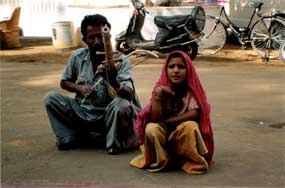The New Power Play India
September 02, 06
| |
In the third installment of our series -The New Power Play - Understanding the Diamond Industry Upheaval, our diamond industry plane lands in a country that is in the midst of an economic boom. India today is the diamond industry’s highest added value producer, with a domestic market set to swallow the finished product in giant-size gulps the Indian diamond industry, there is no talk about the “good old days.” The world’s largest democracy (1.05 billion people of which 70 percent is aged below 35), has now also become the world’s fastest growing diamond and jewelry center. It is the one place in which “a great future” is still ahead. Few of the external threats facing the traditional cutting centers will have an impact on India. The world’s oldest diamond producer is finally getting access to the product’s added value.
In 1967, the modern Indian polishing industry began its meteoric rise - creating the world’s principal diamond manufacturing sector. Prior to the emergence of India, the world’s diamond production was considered 20 percent gem quality, with the remaining 80 percent of stones used in industrial settings. Industrial prices had historically been high - but gradually synthetic abrasives came to replace natural diamonds and the prices for natural industrial goods declined. Then De Beers “discovered” India. The company realized that a wide range of industrial diamonds could be reclassified as “near gems” and a whole new class of what was disrespectfully viewed as “junk diamonds” emerged.
Who at that time thought it was feasible to cut tens of millions of carats of which the cutting costs ($0.70-$1.50 per stone) would actually be higher than the diamond’s material value?1
Little thought was given though at the time to the impact of mountains of small cheap diamonds (0.01-0.02 carat per stone) on the “diamond dream,” the affluent consumer’s perception of rarity, value, prestige, status, and romance associated with the product. A marriage sealed with cheap near-gems is not likely to last beyond the honeymoon.
Almost forty years after the Indian diamond industry first stepped onto its revolutionary journey, its parameters are simply staggering: The diamond and jewelry industry accounts for 19 percent of the nation’s entire exports.
India has 7,000 diamond exporters, 25,000 diamond manufacturers, and over 800,000 workers. At the turn of the century it counted “merely” 10,200 manufacturing units, illustrating the enormous continuous rise of the industry.2
Export values have doubled; alongside the growth in manufacturing capacity.
Slightly over 94 percent of the global workforce in diamond manufacturing is in India.
In this chapter of the ‘The New Power Play - Understanding The Diamond Industry Upheaval,’ Chaim Even-Zohar pilots the diamond plane to India and navigates the intricate workings of the world’s fastest growing diamond market.
On July 11, a series of devastating terrorist attacks on Mumbai commuter trains claimed the lives of over 200 people, including 27 members of the Diamond Trader’s Association. “We are in shock and we are feeling a deep sense of loss,” said Sanjay Kothari, marketing head of the Gems & Jewellery Export Promotion Council to the Reuters News Agency. “To lose so many people has been a serious blow and we have to do what we can to help.” About 5000 traders and brokers regularly commute between Mumbai and Surat and Rajkot and Bhavnagar in Gujarat. 
IDEX sends its sincere condolences to those who lost loved ones, family and friends in these horrific attacks.
1. De Beers knew what it was doing. In 1967 it discovered the low value Orapa mine in Botswana, which was brought into production in 1971 and has produced some 200 million carats since then and is likely to produce multiples of this in the next two generations. The average output value is $47 per carat.
2. See: A.F. Ferguson & Co., Indicative Medium Term Plan for Export Target and Export Strategies (2001-02 to 2005-06), Gem & Jewellery Export Promotion Council, Mumbai, 2001
